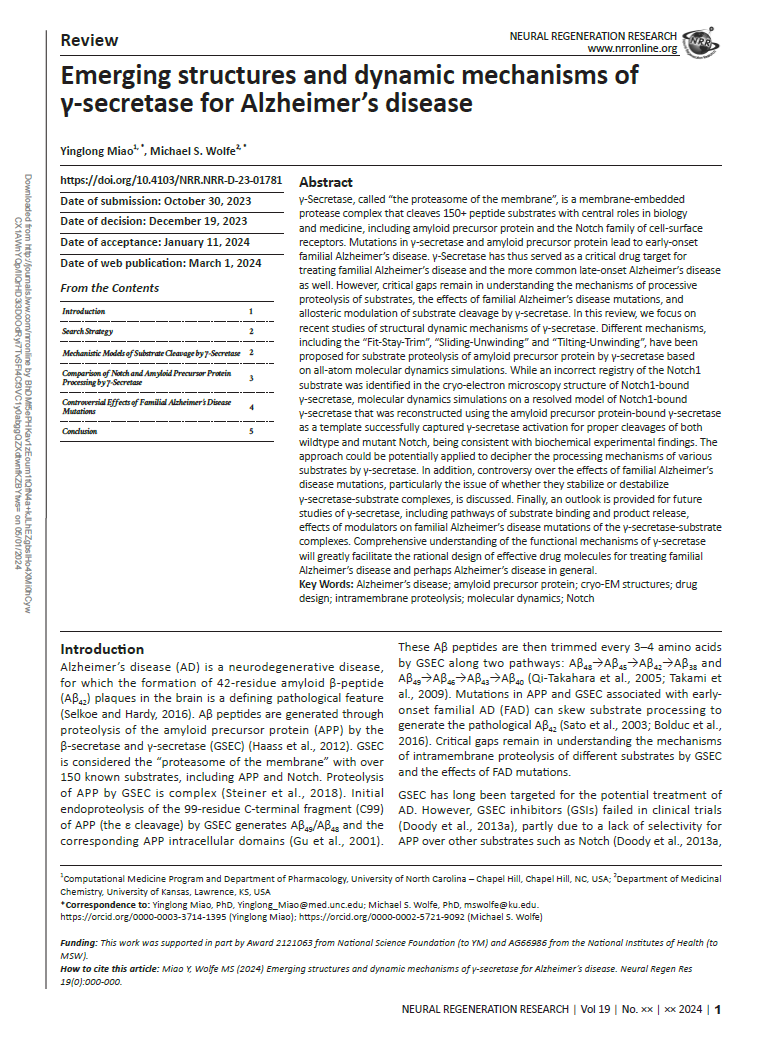Emerging structures and dynamic mechanisms of γ-secretase for Alzheimer's disease
March 2024
Abstract
γ-Secretase, called “the proteasome of the membrane”, is a membrane-embedded protease complex that cleaves 150+ peptide substrates with central roles in biology and medicine, including amyloid precursor protein and the Notch family of cell-surface receptors. Mutations in γ-secretase and amyloid precursor protein lead to early-onset familial Alzheimer's disease. γ-Secretase has thus served as a critical drug target for treating familial Alzheimer's disease and the more common late-onset Alzheimer's disease as well. However, critical gaps remain in understanding the mechanisms of processive proteolysis of substrates, the effects of familial Alzheimer's disease mutations, and allosteric modulation of substrate cleavage by γ-secretase. In this review, we focus on recent studies of structural dynamic mechanisms of γ-secretase. Different mechanisms, including the “Fit-Stay-Trim”, “Sliding-Unwinding” and “Tilting-Unwinding”, have been proposed for substrate proteolysis of amyloid precursor protein by γ-secretase based on all-atom molecular dynamics simulations. While an incorrect registry of the Notchl substrate was identified in the cryo-electron microscopy structure of Notchl-bound γ-secretase, molecular dynamics simulations on a resolved model of Notchl-bound γ-secretase that was reconstructed using the amyloid precursor protein-bound γ-secretase as a template successfully captured γ-secretase activation for proper cleavages of both wildtype and mutant Notch, being consistent with biochemical experimental findings. The approach could be potentially applied to decipher the processing mechanisms of various substrates by γ-secretase. In addition, controversy over the effects of familial Alzheimer's disease mutations, particularly the issue of whether they stabilize or destabilize γ-secretase-substrate complexes, is discussed. Finally, an outlook is provided for future studies of γ-secretase, including pathways of substrate binding and product release, effects of modulators on familial Alzheimer's disease mutations of the γ-secretase-substrate complexes. Comprehensive understanding of the functional mechanisms of γ-secretase will greatly facilitate the rational design of effective drug molecules for treating familial Alzheimer's disease and perhaps Alzheimer's disease in general.

